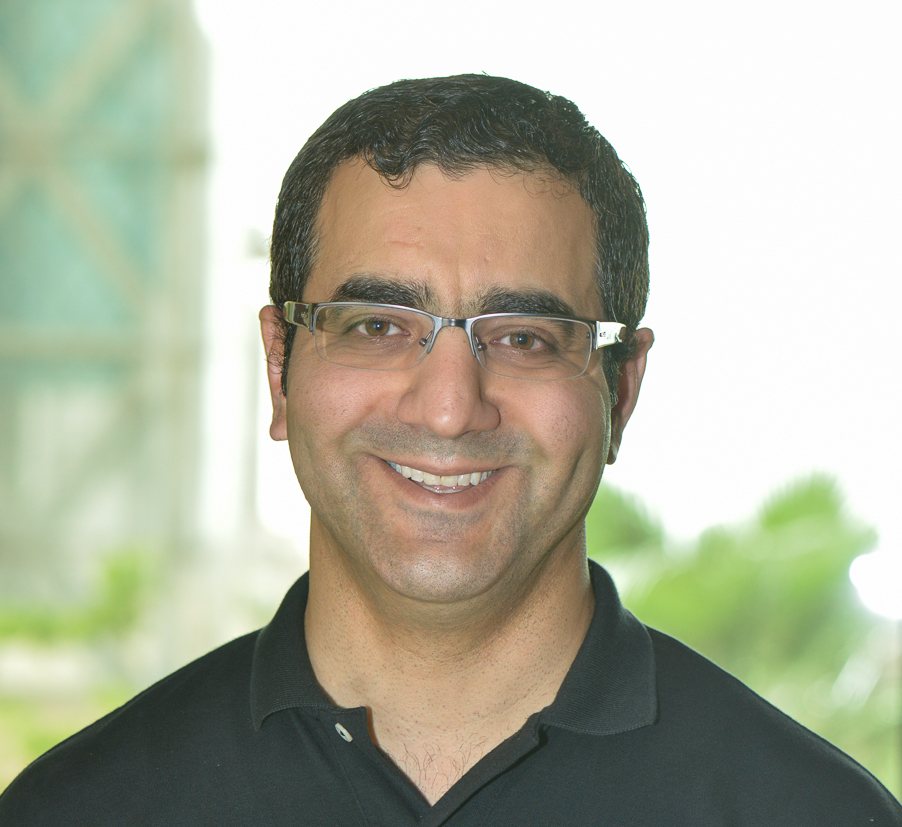Detecting and tracking the coronavirus is hard, but not impossible

KAUST Associate Professor of Bioscience Samir Hamdan.
Since the coronavirus swept across the globe, everyone is involved in some combination of tracking, containing, treating, or preventing COVID-19. Some of the world's brightest scientific minds, including KAUST Associate Professor of Bioscience Samir Hamdan and his colleagues in the Rapid Research Response Team (R3T) are trying to overcome these challenges.
We spoke with Professor Hamdan recently about COVID-19 and the work he and his colleagues are doing to understand and counteract it's spread.
KAUST News:
What do we know at this point about the SARS-CoV-2 virus and the disease it causes, COVID-19?
Hamdan:
A virus' environment will influence how it spreads. And because people with COVID-19 don't seem to present symptoms immediately, infected individuals can live their lives for days to weeks without realizing they are carriers.
We also know that the virus spreads through water droplets, including those in the air from exhalations, coughs, sneezes, etc. We don't know how long it remains in the air, but people in enclosed spaces are more likely to transmit the virus than physically distant people in the outdoors, where the air is constantly moving.
Personal hygiene, sanitization, and personal protective equipment (PPE) all help to mitigate the spread of the virus. Social distancing measures can take it a step further—if there are no people around, the virus won't have any new hosts to infect. A break in the chain can help stop the spread, which is why social distancing has been so important in containment of the virus.
KAUST News:
Where are we with detection of the virus?
Hamdan:
We can detect many cases of COVID-19 if they're symptomatic: common signs like fever, rash, or difficulty breathing are now red flags to everyone who's heard of the virus. But for the "silent spreaders," those who carry and spread the disease without realizing it, we need increased testing.
Most of the testing we've introduced is RNA detection testing. These tests are designed to identify the RNA of the SARS-CoV-2 virus, the core of the virus and the cause of its behavior and reproduction. Labs in academia and industry alike are reallocating resources and scaling up efforts to create and run these tests, as we work to test as many people as we can for the virus.
Our group recently assembled a complete homemade, one step RT-PCR test, the standard COVID-19 molecular test, that is on par with commercially approved kits. The beauty of our kit is that they provide the recipe to manufacture them in a patent-free paradigm. RT-PCR tests, however, can't be used in point-of-care settings since they require sample processing and specialized instrumentation.
The KAUST R3T is involved with research that pursues ways to make faster, more accurate tests that can be run at point-of-care. This is highlighted by our recently assembled CRISPR-based molecular test. And we're also exploring ways to harness the power of sequencing in diagnostics and improve the accuracy of molecular testing.
Our team is also joining the pursuit of antibody tests, which could help us identify who has already had the virus and subsequently, who might now have antibodies. In fact, some of the novel methods we are exploring to detect SARS-CoV-2 antibodies include transistors to electrically read out the result of a test quickly; AI to read CT-imaging and possibly identify COVID-19; and immunoassays to detect antibodies in the blood.
While discovering antibodies is an important piece of coronavirus research, we don't yet know for sure if these antibodies will confer resistance, and for how long. Understanding who has had the virus, however, could also help us understand the spread.
KAUST Associate Professor of Bioscience Samir Hamdan in the KAUST laboratories.
So what lessons today might help protect us tomorrow?
Hamdan:
There's a reason that COVID-19 has stopped the world in its tracks: it's stealthy, pervasive, and dangerous – and it caught us off guard. Every industry is learning and responding in real-time as the pandemic develops. Attacking with every tool in our toolbox is key to stopping the virus and preventing its return.
Not every test in development will make it to patients. Statistically, most will never leave the lab. But every new experiment holds possibility, and as we develop new chemistry and new methods, we arm ourselves with tools for the future.
History tells us this won't be the last time a pathogen threatens our world. So as we develop tools to detect the virus currently grabbing headlines, we'll be able to employ these and other tools to meet the challenges of the future more quickly, more accurately, and at a greater scale than before.
Related stories
- Serving the Kingdom's COVID-19 research
- Harnessing nanoparticles for COVID-19 testing
-
Ensuring access to potentially lifesaving tech

